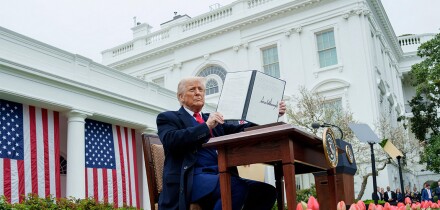A convertible grants the bondholder the right to convert the bond into a predetermined number of shares of common stock, i.e. the bondholder is long a call on the issuer's stock. The conversion ratio is the number of shares that the bondholder receives upon conversion.
Convertible issues are commonly callable by the issuer and putable by the holder. If a convertible bond is called, the holder can sell the bond to the issuer for the call priceCt, convert it into shares of common stock or put it at the put pricePt.
Convertible bonds are subject to default risk. If the issuer defaults, the bondholder receives the recovery price. We explicitly model the impact of potential default on the pricing and hedging of convertibles. We briefly discuss two approaches, the credit spread model and the firm value model.
MODELING DEFAULT
Credit spread model: The stock price conditional on no default is modeled as a lognormal process. The process is discretised using a trinomial lattice as shown in figure 1. The lattice is augmented by an additional leg which corresponds to the default state. In case of default it is assumed that the stock price is worthless and that the recovery rate of a straight bond is *. The risk-free interest rates can be stochastic and modeled using standard approaches.
The risk-neutral default probability qt is determined by the following equation qt = ct / (1 - *), where ct is the credit spread of a straight bond of the same issuer. At each node the rest of the parameters are set such that the following three conditions are satisfied. The stock price is a martingale, its variance conditional on no default matches the historical estimate and the tree is recombining.
The credit spread is driven by the stock price and it is modeled as:
The parameters ß1,ß2 and the volatility of the noise term can be estimated either from time-series data of the credit spread vs. the stock price or from observations of convertible bond prices vs. the underlying stock as shown in figure 2. The parameter ß0 determines the average credit spread of the issuer and it reflects the issuer's credit quality.
Firm value model: The value of the firm is assumed to follow a lognormal process, discretised using a trinomial tree similar to the one shown in figure 1 (except for the default leg). The capital of the firm is composed of NB straight bonds each with market value ßt, Nc convertibles with market value CVt and Ns shares of common stock with market value StBC. The value of each security is endogenous to the model. Before and after conversion the value of the firm is given respectively by the following equations:
Vt = NBBt + NcCVt +NsStBC and
Vt = NBBt + (Ns + Ns)StAC where Ns is the number of shares issued as a result of conversion and StAC is the stock price after conversion. The value of the convertible at each node in the firm value tree is determined by assuming that both the issuer and the investor will follow optimal strategies i.e. minimise and maximise the convertible value respectively. Therefore, CVt = max(min(HVt,Ct),Pt,VCt,) where VCt is the conversion value and HVt is the 'hold' value of the convertible i.e. its discounted value in the tree. At maturity(T), the value of the convertible is CVT = max(F,PT,VCT), since the holder has the choice between getting the face value F, the conversion value or the put price.
The price of the convertible bond and its delta with respect to the stock price are shown in figure 2. This graph can be constructed using either one of the two models. For very high stock prices the convertible price equals its conversion value. Changes in its price are almost perfectly correlated with changes in the stock price, resulting in a hedge ratio approximately equal to 1. At intermediate stock prices, the convertible is insensitive to stock price movements, behaving like a straight bond. However, at very low stock prices, the convertible price falls rapidly and the delta once again increases as there is a significant chance that the firm will default. Notice that delta reaches a maximum and approaches zero as the stock price goes to zero. This is consistent with the observation that convetibles trading at extremely low stock prices can be fairly insensitive to equity movements. This feature is endogenous to the firm value model. In the credit spread model it can be incorporated by introducing the smile effect, ie. the stock price volatility depends on the level of the stock price.
This week's Learning Curve was written by Angelo Arvanitis, head of quantitative credit and risk research at Paribasin London.






